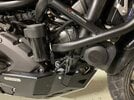Mr. Commuter
Member
Hello I have been using Denali sound bomb compact for just one year. It's always been disturbed by water. Now am thinking about replacing it with another horn. Am considering the split version of it.
Is there anyone suing toe Denali sound bomb split horn?? I need some reviews.
What are the consequences of not using the wiring harness when connecting the horn???!!
Is there anyone suing toe Denali sound bomb split horn?? I need some reviews.
What are the consequences of not using the wiring harness when connecting the horn???!!



